Nikon announces compact & affordable Z 17-28mm F2.8 wide-angle lens for full-frame mirrorless cameras
posted Tuesday, September 20, 2022 at 12:01 AM EDT
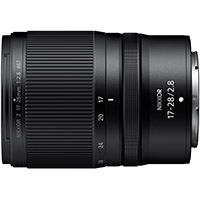
Nikon has announced a new affordable zoom lens, the Nikkor Z 17-28mm F2.8. The wide-angle zoom joins the Z 28-75mm F2.8 as a new budget-friendly F2.8 zoom.
With a suggested retail price of $1,199.95, the Z 17-28mm F2.8 is about $1,300 cheaper than Nikon's excellent Z 14-24mm F2.8 S lens, albeit with a slightly different focal length range. The Z 17-28mm F2.8 puts fast-aperture wide-angle photography within reach for more Nikon Z users.
"The amount of NIKKOR Z lenses continues to increase at a rapid pace, giving all kinds of creators mirrorless lenses built with the latest in optical innovation," said Jay Vannatter, Executive Vice President, Nikon Inc. "The new NIKKOR Z 17-28mm f/2.8 is derived from the same mutual concept as the recent NIKKOR Z 28-75mm f/2.8 lens, establishing a series of affordable zooms that open a gateway to fast-aperture performance and absolute versatility."
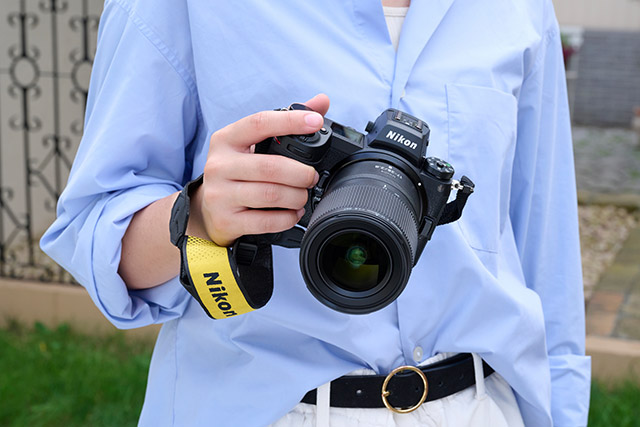
The Nikon Z 17-28mm F2.8 lens has another advantage over the expensive S-series 14-24mm F2.8 S lens – the new lens is much smaller and lighter. The Z 17-28mm F2.8 lens is 101mm (4 in.) long, and its max diameter is 75mm (3 in.). The Z 17-28mm F2.8 is an internal zoom lens, too, meaning it doesn't extend as you change the focal length. The lens weighs 450g (15.9 oz.). In contrast, the Z 14-24mm F2.8 is 124.5mm (5 in.) long, and its max diameter is 88.5mm (3.5 in.). The 14-24mm F2.8 weighs 200g more, which is about a 30% difference.
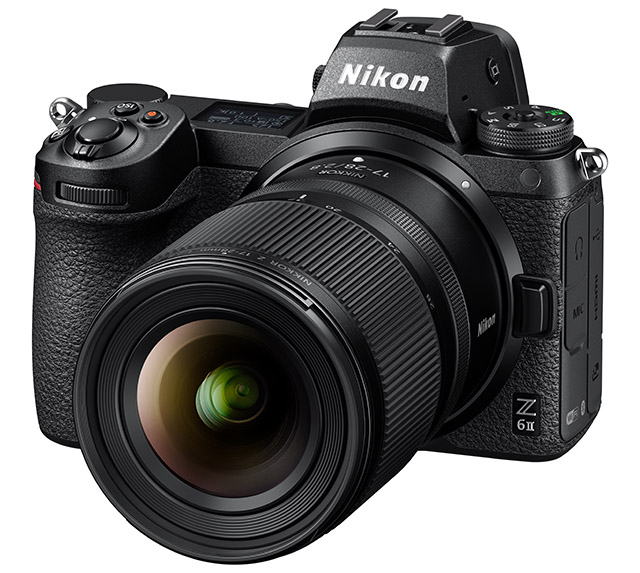
The Z 17-28mm F2.8 lens has a 67mm filter thread, whereas the 14-24mm F2.8 S lens' specialized lens hood accepts 112mm filters, which are unusually large. Of course, it's worth pointing out that there's a significant difference between engineering 14-24mm F2.8 and 17-28mm F2.8 lenses. The extra field of view doesn't come cheap.
Nikon says that the new lens is sealed to prevent the entry of dust and water droplets, so the lens should be well-suited to outdoor photography. Nikon says, "The lens is constructed for creators who aren’t afraid to go off the beaten path in pursuit of their content."
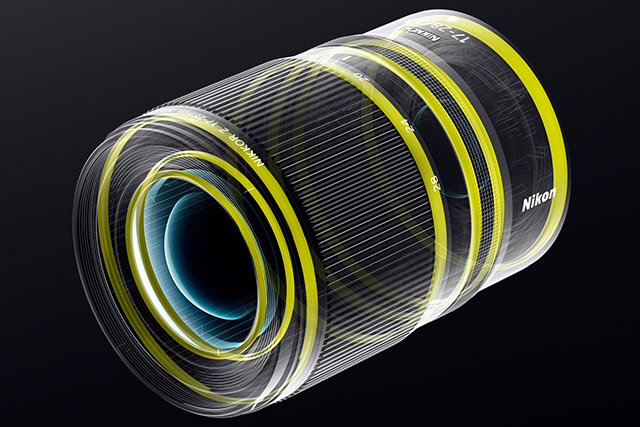
As for glass, the Z 17-28mm F2.8 lens includes 13 elements organized across 11 groups. This is three fewer elements than the Z 14-24mm F2.8 S. Plus, the new Z 17-28mm F2.8 lacks Nano Crystal and ARNEO coatings, which are characteristic coatings for S Series lenses.
Autofocus is provided via a high-speed stepping motor (STM). The STM system promises swift and nearly silent autofocus during photo and video recording. The lens promises minimized focus breathing, which should benefit video content creators. The lens also has a click-less control ring for quiet, smooth exposure transitions. The lens' minimum focus distance is just 0.19m (7.6 in.) at 17mm and 0.26m (10.3 in.), resulting in a max magnification of 0.19x at 17mm and 0.17x at 28mm.
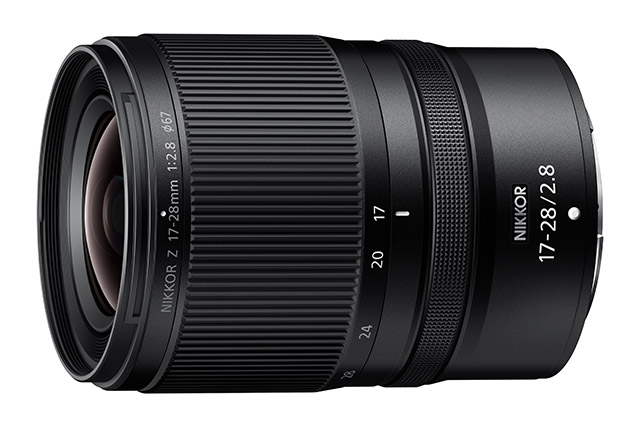
The Nikon Z 17-28mm F2.8 Nikkor lens will be available in late October for $1,199.95.
The latest Nikon Z lens roadmap
Nikon has also updated its Nikkor Z lineup roadmap to version 5.0 (to 2023). The Z 17-28mm F2.8 is now on the roadmap next to the Z 28-75mm F2.8 lens. There are still nine lenses on the roadmap yet to be announced, including seven for full-frame (FX) Z cameras. A 70-180mm lens is on the roadmap, which could be an F2.8 zoom. Digging further into that theory, Tamron has a 17-28mm F2.8 zoom lens for E-mount cameras with 13 elements across 11 groups, the same minimum focus distance, and nearly identical dimensions as the new Z 17-28mm F2.8. You may recall that the Z 28-75mm F2.8 shares much in common with Tamron's original 28-75mm F2.8 lens for mirrorless cameras. Tamron sells a 70-180mm F2.8 lens for E-mount cameras, by the way.
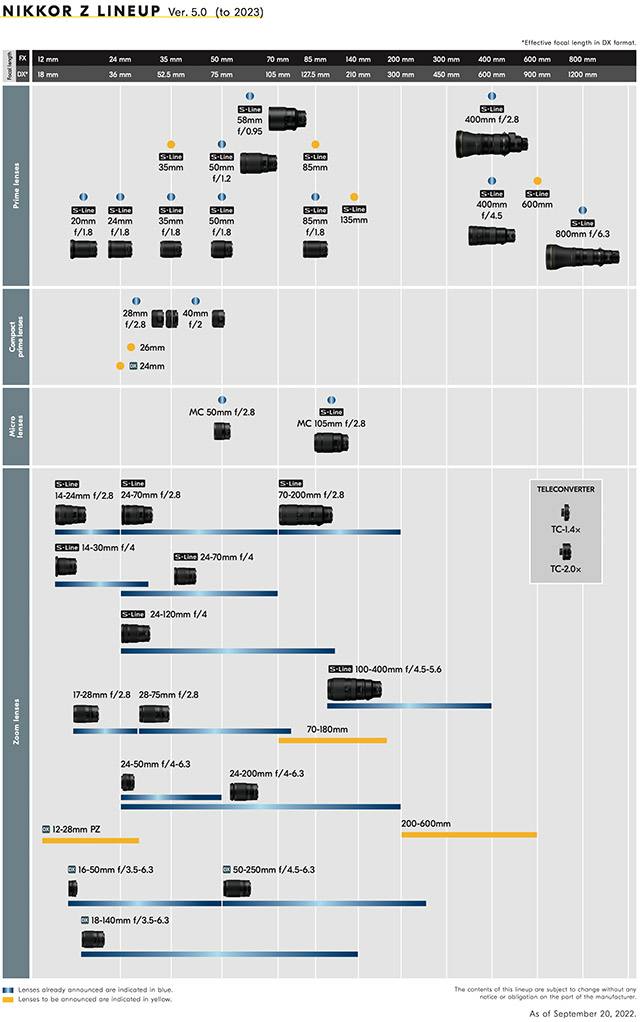
There are two other zoom lenses on the roadmap: a DX 12-28mm PZ lens and a 200-600mm lens for full-frame cameras. As for compact prime lenses, Nikon will release a 24mm for DX cameras (35mm equivalent) and a 26mm prime for full-frame cameras. Four S-Line prime lenses are on the way, including 35mm, 85mm, 135mm and 600mm primes. It's safe to assume the 600mm lens will be a 600mm F4 lens for Z cameras. It's reasonable to expect the 35mm and 85mm primes to be F1.4 or faster, given that there are already S-Line 35mm F1.8 S and 85mm F1.8 S primes in the Z system. As for the 135mm lens, either F1.4 or F1.8 makes sense.